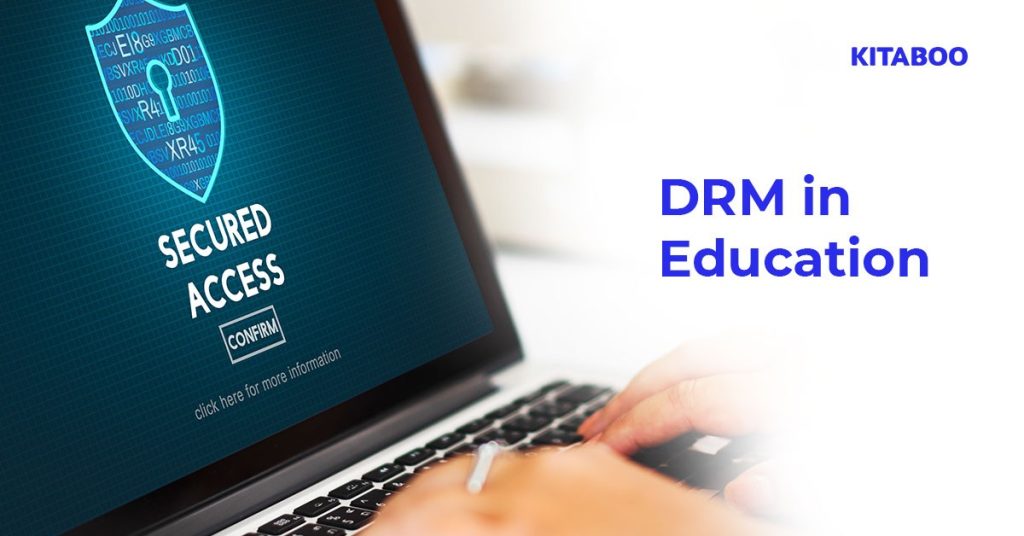
DRM Protection in K12 Education: The Pros and Cons for Publishers and Students
Digital Rights Management (DRM) helps significantly in controlling and restricting the unauthorized use and distribution of digital content. Legal issues due to intellectual property theft and unauthorized use can be severe and expensive for K12 publishers. They thus rely on DRM significantly to increase sales and revenue.
However, along with the advantages of DRM for both publishers and students, there are some disadvantages as well. Sometimes, due to DRM protection measures, students and educators lose the opportunity of engaging with the content more creatively and productively.
Let’s understand both sides of the coin of DRM protection in more detail.
Here’s what we’ll cover.
Table of Contents
How K12 Publishers Implement DRM Protection?
For DRM protection measures to work effectively, publishers use various applications and technologies to implement encryptions, licenses, and passwords on copyrighted material. These protection measures function in a variety of ways such as:
– They prevent users from saving or copy-pasting the contents of the file.
-They prevent users from illegally sharing the content electronically via email or any other way.
– They prohibit the use of screenshots.
– They can allow access on the basis of factors such as location, IP addresses, devices, etc.
And that’s not all.
Pros for K12 Publishers
In this decentralized information age, it’s only natural that a publisher would want to protect their content. Here are a few ways DRM protection helps them do that.
Allows for Licensing: Intellectual property theft can be both intentional and unintentional. DRM technology enables publishers to monitor this by using licenses. These licenses allow publishers to choose who can access the content and when. Only authorized users with a license may be granted access.
Ensures Confidentiality: Identity theft and phishing scams have become a part of daily life. DRM can help protect sensitive information of both organizations and individuals. In the education sector, this could be applied to protect the information of educators or even students.
Protects Ownership: DRM works in addition to copyright law. While copyright law protects the work of a content creator, DRM helps implement this law. With DRM, a content creator (even if they are a publisher as well) can prevent their work from being repurposed or reproduced illegally. It also helps creators track their work and identify where exactly a breach occurred.
Protects Revenue: By allowing only authorized, paying users to access content, DRM ensures that both content creators and publishers are compensated fairly for their efforts in creating and marketing the content. Furthermore, by protecting the ownership of the material, losses can be prevented.
Cons for K12 Publishers
Despite the benefits mentioned above, there are a few reasons why a publisher might choose not to implement DRM protection.
Implementation: DRM can come with a lot of technical complexities, and not every publisher can implement them effectively, without professional help. This could lead to an increase in the cost and effort required to use DRM technologies.
Apart from that, even if one could afford to implement DRM, the process involves immense collaboration between the DRM provider and software technicians. Any communication gap in this process can lead to a malfunction.
Compatibility: Compatibility issues between numerous software and services can make it difficult for the publisher to effectively protect all their content. If the DRM solution is not compatible across multiple devices, the publisher also stands to lose users.
Lack of Uniformity: Currently there is no uniformity in DRM. Content publishers can pick and choose what they wish to implement and how. While this may appear like a good thing, it affects business on two levels.
Firstly, as mentioned above, implementing multiple forms of DRM can be a challenge.
Secondly, most end-users do not want to subscribe to multiple DRM providers as this increases the costs they incur, especially after having purchased the content.
DRM for K12 Students
The end-user in the field of education is usually the student. Let’s see how DRM protection affects them.
Pros for Students
Undoubtedly, DRM has played a crucial role in facilitating online education globally, especially during the COVID-19 pandemic. Here are a few ways in which it helped.
Online Examinations: One of the biggest worries for educators used to be cheating during an online exam. However, using DRM this is no longer an issue. While most K12 students may not enjoy exams, DRM does ensure they can complete their course without hindrance.
Online Libraries: DRM technology has allowed K12 institutions to move their libraries online. Since DRM allows institutions to limit user access based on duration and student profile, eBooks can be borrowed easily, just as one would have done offline.
Authentic Content: Pirated physical books are usually fairly easy to identify. The quality of paper used, the font type, spelling issues and so on are all indicators of the authenticity of the book.
However, pirated content or misinformation on the internet is tougher to identify. With DRM protection students can rest easy, knowing they are studying authentic, up-to-date content.
Cons for Students
DRM protection has been accused of hampering the learning process. Let’s explore how.
Knowledge Sharing: In the offline world, when a student wishes to clear their doubts, they have the option of borrowing the notes and textbooks of their classmates or seniors/juniors. With DRM, this free sharing of knowledge is restricted. In order to use someone else’s eBook, students need to be registered as legitimate users.
Printing: Some students learn better with offline materials. They can jot down their notes, highlight important topics or sometimes just prefer to use a hard copy. While eBooks allow for notes and highlighting, with DRM, the number of printouts one can take is limited.
Teaching: Often educators use reference materials to explain concepts to their students. Sometimes they might choose to share examples from certain eBooks with their students. However, with DRM protection, the material an educator can share is also limited.
Conclusion
In our digitally enhanced lives, the amount of content available is huge. And this content exists in various formats such as video, audio, eBooks, teacher guides, worksheets, software, etc.
Protecting both the creators and users of this content can be challenging especially in the educational context. Here, implementation is the key to a successful DRM protection policy.
As a K12 publisher, if you’re struggling with your DRM policies, worry not. We at KITABOO, are a digital content creation, publishing and distribution platform with a focus on DRM implementation.
To know how we can help you protect the rights of all your stakeholders, write to us at contact@kitaboo.com.
Discover how a mobile-first training platform can help your organization.
KITABOO is a cloud-based platform to create, deliver & track mobile-first interactive training content.


